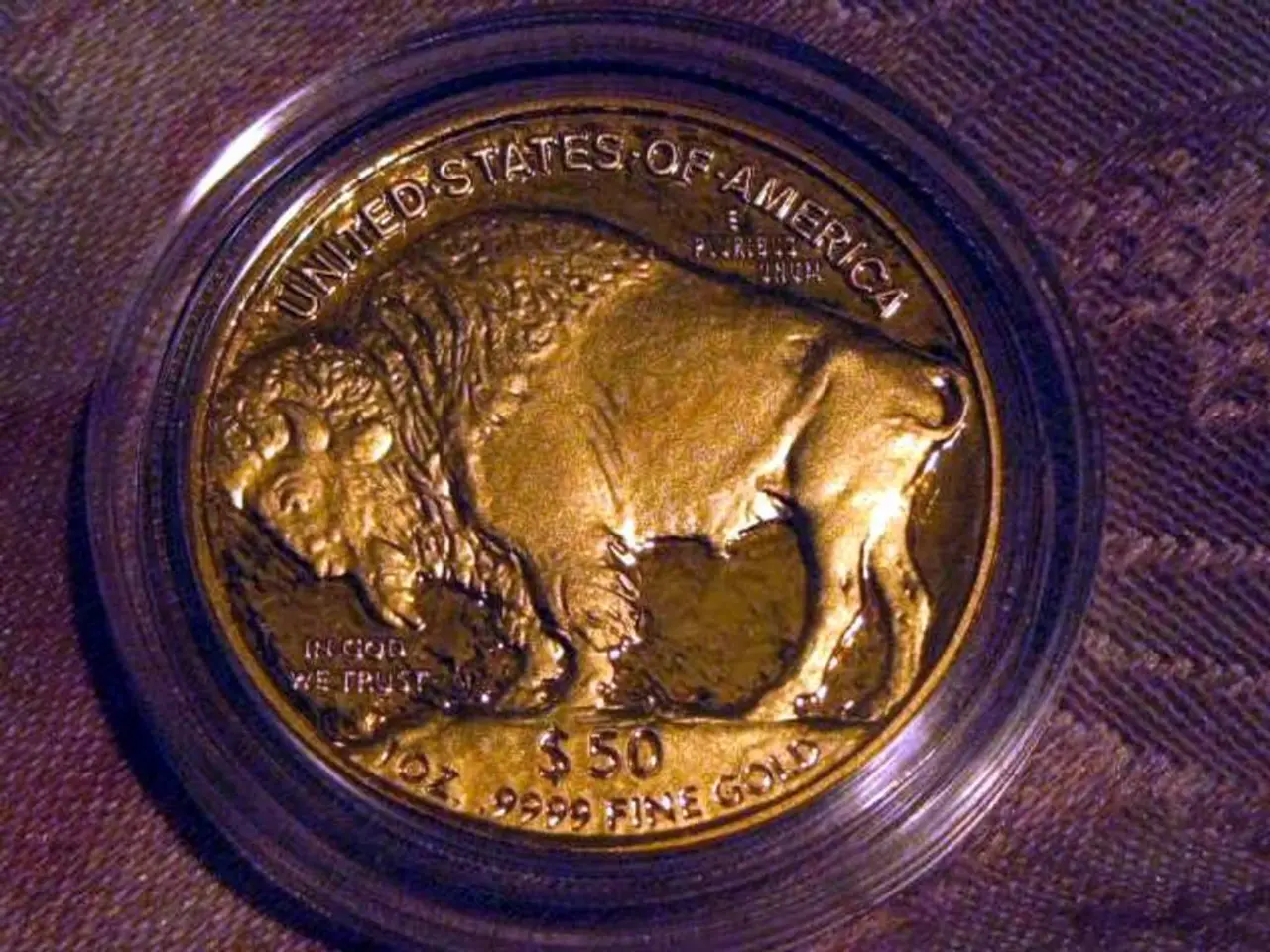Signs indicative of potential turbulence for the U.S. currency?
The world of global finance is experiencing a significant shift, with countries increasingly seeking protection from instability and politically exposed financial assets. According to Harold James, Claude and Lore Kelly Professor in European Studies at Princeton University, this mirrors past periods of geopolitical stress.
Several key players are contributing to this discussion. Yara Aziz, Senior Economist at OMFIF, is one such voice, while Pierpaolo Benigno, professor of monetary economics at the University of Bern, and Edoardo Reviglio, visiting senior research scholar at Yale Law School, offer insights from Europe. Jesper Koll, global ambassador and expert director, Monex Group, Japan, and Michael Paulus, head of public sector banking, Asia, Alberto Torres, head of public sector banking, LATAM, Sunil Kaushik, head of precious metals solutions, APAC, Natalie Tsui and Tobias Cheung, public sector banking, Asia at Citi, provide perspectives from Japan.
A UBS survey reveals that 74% of reserve managers believe the euro will benefit from global macroeconomic and geopolitical shifts over the next five years. However, 47% of these managers fear a deterioration in the quality and independence of US economic data. This focus on alternatives is driven by uncertainty, with investors and reserve managers debating whether the dollar is truly in decline.
For any safe asset to rival US Treasuries, it must be built on a foundation of fiscal responsibility, credible repayment mechanisms, and clearly defined rules. This is a challenge for potential alternatives like digital currencies, China’s renminbi, cryptocurrencies such as Bitcoin, and traditional stores of value like gold.
The Global Dollar (GD), a recently proposed decentralized currency, aims to be an alternative global reserve for international trade. The GD seeks to build critical mass through BRICS countries using it in trade and would float freely on market demand after transition. The digital euro, being developed by the European Central Bank, is aimed at preserving Europe’s monetary sovereignty and payment resilience, with potential future applications extending beyond retail usage to wholesale markets and serving as a public alternative to dollar-backed stablecoins.
China’s renminbi is gaining interest among reserve managers, with 61% holding or considering RMB reserves and a modest increase in target allocations. However, structural limitations like capital controls, financial market restrictions, and US-China tensions limit its current appeal as a fully global reserve currency.
Cryptocurrencies, especially Bitcoin, are increasingly considered by some central banks and reserve managers as potential hedges or supplements rather than outright replacements. Bitcoin’s attributes — scarcity, decentralization, neutrality, and technological resilience — give it structural advantages, but regulatory uncertainty and centralization risks persist.
Gold remains a traditional hedge and store of value but is generally regarded as a complement to, rather than a successor of, fiat reserve currencies. Its role is typically defensive against instability rather than transactional in global trade.
The Japanese yen is still a recognized reserve currency but accounts for a considerably smaller share (~5.8%) of global reserves and is not currently positioned to challenge the dollar’s dominance. It’s less mentioned in emerging alternatives compared to digital initiatives and Asia's RMB.
Europe, through the ECB’s digital euro initiative, is proactively adopting digital assets to safeguard monetary sovereignty and enhance payment systems. The digital euro is positioned as a strategic tool rather than an immediate dollar replacement, reflecting Europe's monetary and geopolitical aspirations.
In summary, the reserve currency landscape is evolving from traditional fiat dominance toward a more diversified and digitized system involving sovereign digital currencies (like the digital euro), rising national currencies (renminbi), decentralized cryptocurrencies (Bitcoin), and concepts like the decentralized Global Dollar. However, the U.S. dollar remains the dominant reserve currency for now, with alternatives still facing regulatory, geopolitical, and market acceptance challenges.
[1] Global Dollar White Paper, 2021. [2] European Central Bank, "Digital euro," accessed March 2023. [3] OMFIF, "Reserve Management 2022 Survey Results," 2022. [4] Coinbase Asset Management, "Institutional Investors and Cryptocurrency," 2022. [5] BIS, "Central bank digital currencies: foundational principles and core features," 2021.
- The world of global finance is witnessing a shift towards alternatives to US Treasuries as a global reserve currency, driven by geopolitical stress and uncertainty.
- Sovereign digital currencies, such as the European Central Bank's digital euro, are being adopted to safeguard monetary sovereignty and enhance payment systems.
- China's renminbi is gaining interest among reserve managers, but structural limitations like capital controls and US-China tensions limit its current appeal as a fully global reserve currency.
- Cryptocurrencies, particularly Bitcoin, are being considered by central banks and reserve managers as potential hedges or supplements rather than outright replacements.
- For any safe asset to rival US Treasuries, it must be built on a foundation of fiscal responsibility, credible repayment mechanisms, and clearly defined rules.
- Gold remains a traditional hedge and store of value, but is generally regarded as a complement to, rather than a successor of, fiat reserve currencies.
- The Japanese yen accounts for a smaller share of global reserves and is not currently positioned to challenge the dollar’s dominance.
- The UBS survey reveals that reserve managers debate whether the dollar is truly in decline, with 47% fearing a deterioration in the quality and independence of US economic data.




